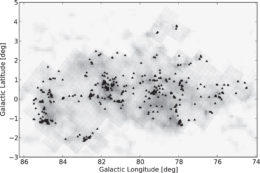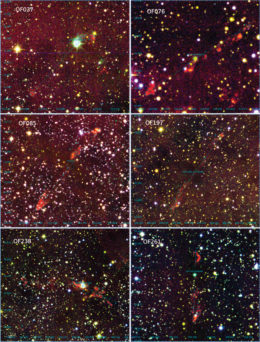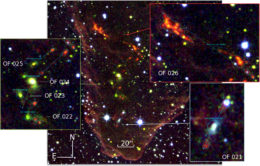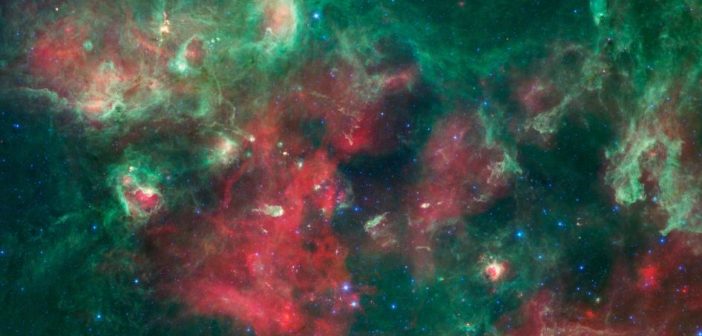How do you spot very young, newly formed stars? One giveaway is the presence of jets and outflows that interact with the stars’ environments. In a new study, scientists have now discovered an unprecedented number of these outflows in a nearby star-forming region of our galaxy.
Young Stars Hard at Work

CO map of the Cygnus-X region of the galactic plane, with the grid showing the UWISH2 coverage and the black triangles showing the positions of the detected outflows. [Makin & Froebrich 2018]
Though we’ve learned a lot about these outflows, there remain a number of open questions. What factors govern their properties, such as their lengths, luminosities, and orientations? What is the origin of the emission features we see within the jets, known as knots? What roles do the driving sources and the environments play in the behavior and appearance of the jets?

A selection of previously unknown outflows discovered as a result of this survey. Click for a closer look. [Makin & Froebrich 2018]
Jackpot in Cygnus-X
In a recent publication, Sally Makin and Dirk Froebrich (University of Kent, UK), present results from UWISH2’s latest release: a survey segment targeting a 42-square-degree region in the galactic plane known as the Cygnus-X star-forming region.
The team’s search for shock-excited emission in Cygnus-X yielded spectacular results. They found a treasure trove of outflows — a remarkable 572 in total, representing a huge increase over the 107 known previously.
Makin and Froebrich then measured properties of the outflows themselves — such as length, orientation, and flux — as well as properties of the sources that appear to drive them.
Pinning Down Properties

This low-mass bright-rimmed cloud near IRAS 20294+4255 contains a number of stellar outflows. It may warrant further study as a classical example of triggered star formation. [Makin & Froebrich 2018]
Exploring the knots of bright emission within the outflows, the authors found that they are typically closely spaced, suggesting that the material generating them is ejected every 900–1,400 years. This rapid production — faster than what has been found in YSO outflows in other regions — rules out some models of how these knots are produced.
Based on the fraction of UWISH2 data analyzed so far, the authors estimate that the entire UWISH2 survey will uncover a total of ~2,000 jets and outflows from YSOs. This large, unbiased new sample is finally allowing astronomers to build out the statistics of YSO outflows to better understand them.
Citation
S. V. Makin and D. Froebrich 2018 ApJS 234 8. doi:10.3847/1538-4365/aa8862


1 Comment
Pingback: young star jets in Cygnus X region